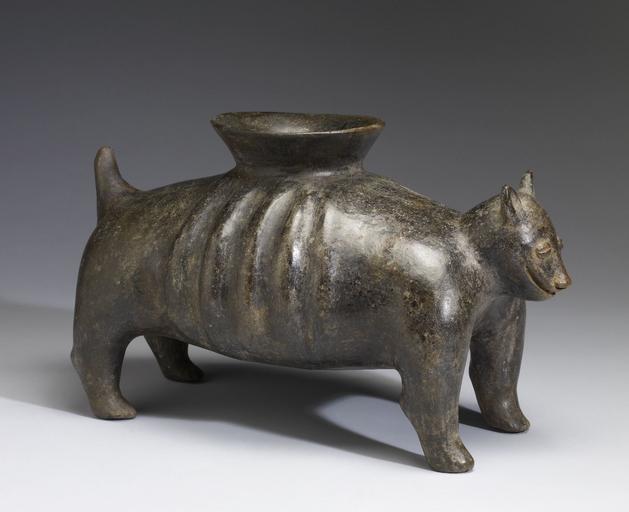MAKE A MEME
View Large Image

| View Original: | Jalisco_-_Dog_Effigy_Vessel_-_Walters_20092023_-_Three_Quarter_Right.jpg (1800x1466) | |||
| Download: | Original | Medium | Small | Thumb |
| Courtesy of: | commons.wikimedia.org | More Like This | ||
| Keywords: Jalisco - Dog Effigy Vessel - Walters 20092023 - Three Quarter Right.jpg Dogs were indigenous to the ancient Americas the Mexican Hairless being the likely model for the West Mexico effigies Throughout Mesoamerica they served as companions hunting partners underworld guides and even sources of food Ceramic portrayals of dogs are particularly numerous in the shaft tombs of West Mexico placed among the burials' myriad human pottery figures and dishes of food for the journey after death Most dogs are depicted as plump and docile As tomb offerings these fattened versions may have symbolized food for the deceased's arduous underworld voyage The black-slipped canine deftly combines a jar form the most important vessel in the Mesoamerican household with an appealing rendering of a smiling dog In this example the dog's ribs recall the flutes of a gourd the ageless and most common food-service vessel throughout the ancient Americas Considered as a whole this vessel-sculpture's multiple references to food suggest that it too alludes to dogs as sustenance 300 BC-AD 200 Archaic burnished earthenware H 8 3/16 x L 13 15/16 x W 7 1/2 in 20 8 x 35 4 x 19 cm accession number 2009 20 23 80178 Ron Messick Fine Arts Santa Fe New Mexico date and mode of acquisition unknown John G Bourne 1990s by purchase Walters Art Museum Gift of John Bourne 2009 place of origin Jalisco Mexico Walters Art Museum license Pottery from ancient Jalisco in the Walters Art Museum Art of Mexico Media contributed by the Walters Art Museum needs category review Dogs in Pre-Columbian art | ||||